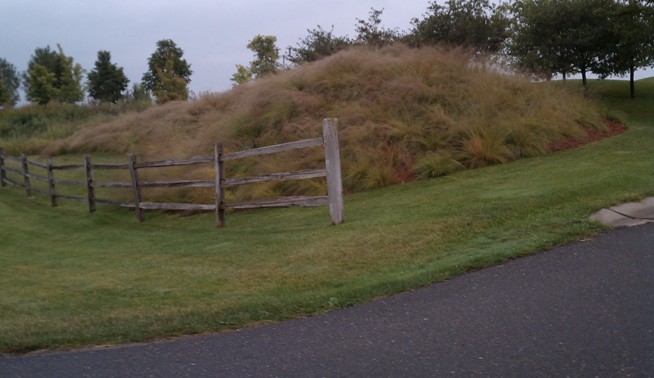2.1: Soil Benefits
- Page ID
- 91471
Low Inputs
Native grasses need little maintenance or input from gardeners. If they are planted in sites suitable to their native habitat, they rarely need water once established. They do well in tough sites that other plants may not be able to handle. Some native grasses are drought tolerant, able to grow in clay-soils, or standing water tolerant. Matching the native grass to its preferred site is key to a long-term sustainable planting. Native grasses rarely need fertilizer, and in fact too much fertilizer can actually be harmful, causing full-grown plants to grow weak and flop over.
Native grasses are generally insect pest and pathogen free (see exceptions in Chapter 4). Because they are indigenous to the region, they have evolved to survive with larger animals that may be pests on other garden plants, such as deer and rabbits. In fact, some grasses with sharper leaves can be used as a barrier to protect vulnerable plants from deer (Darke 2007).
Soil Benefits
Grasses have deep, fibrous root systems that stabilize the soil, reducing erosion. The underground root system of many perennial grasses is larger than the aboveground plant. The fibrous or hair-like nature of grass roots enables them to take up large quantities of water and to increase organic matter in the soil as they decompose. Grasses, with their deep roots, helped produce the rich, fertile soils of the prairie.

These root systems also act as absorption and filtration systems for water runoff, catching impurities and pollutants before they enter the ground water. For this reason, grasses have long been recommended as good plants for buffer strips, located along the edge of crop fields or along paved parking areas. Native grasses can be the workhorses for rain gardens and green swales in urban areas.

| PLANT | ROOT DEPTH |
|---|---|
| big bluestem | 6-7 feet |
| prairie cordgrass | 6-10 feet |
| switchgrass | 8-11 ft |
| little bluestem | 4 -5 ft |
| prairie dropseed | 4-5 ft |
| side-oats grama | 4.5-5.5 ft |
| Junegrass | 15-20 in |


